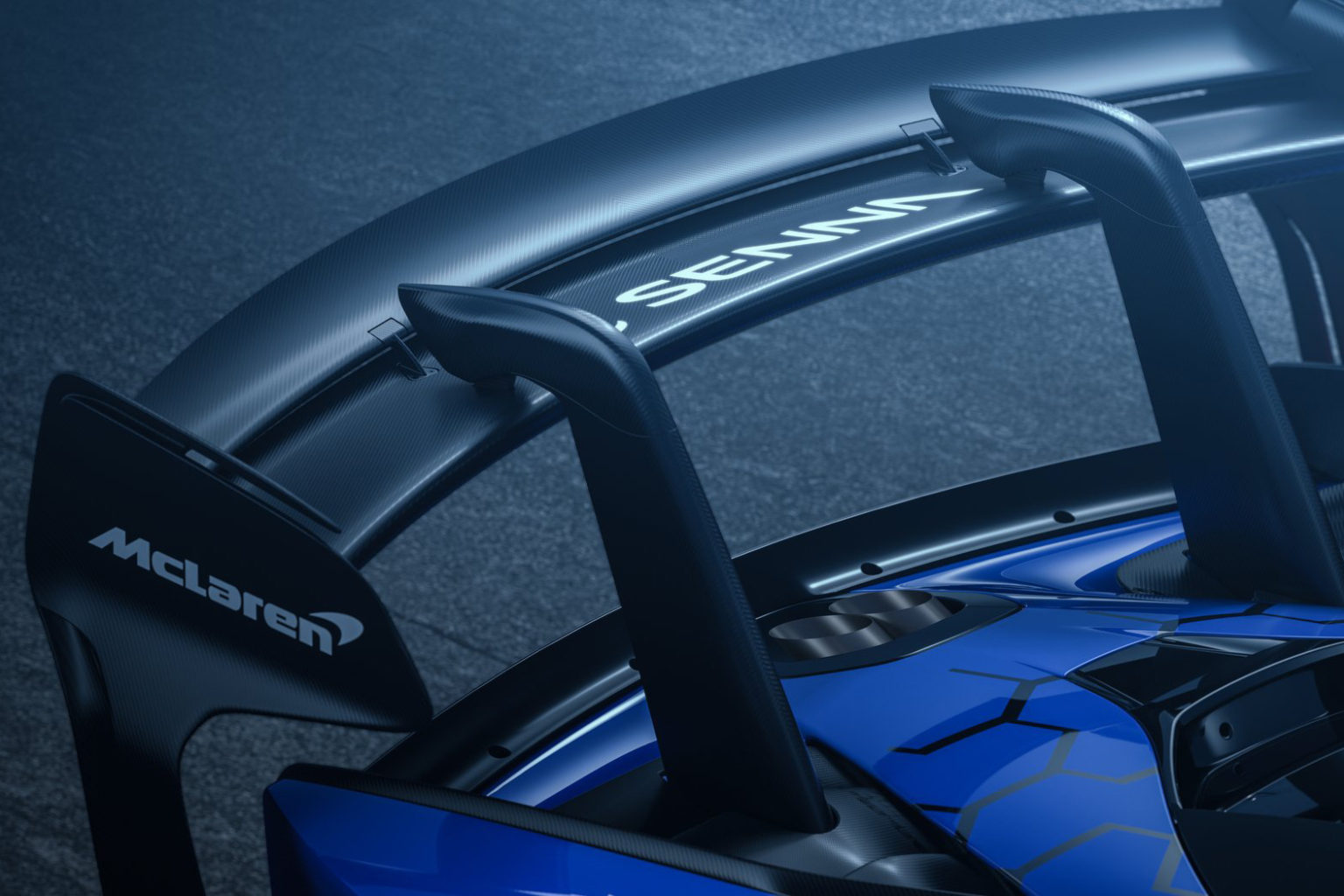Ayrton Senna was a monster on the track, hitting the apex and flying down the backstretch in ways that made crowds the world over fall in love with his capability. The McLaren Senna, a track-horned road car was designed in the spirit of Senna, the man.
The next-level variant of the McLaren, the Senna GTR, takes that athleticism a step further with a car, “designed to deliver the most extreme, raw and engaging driving experience possible,” according to the super luxury automaker. They call the vehicle “mind-bendingly fast”, which makes it a perfect fit for a track day.
The wing on the Senna GTR provides 1,000 kg of downforce.Photo courtesy of McLaren
In the second episode of the McLaren Tech Club series, the company’s principle designer Esteban Palazzo discussed the carbon fiber wing on the Senna GTR and why it makes the car so good.
When designing the car, McLaren engineers set out to give the car 1,000 kg (2205 pounds) of downforce at maximum deployment. That’s 25 percent more downforce than the traditional Senna. The heralded McLaren P1 offered just 640 kg of downforce at 150 mph.
How did they do it? They substantially reworked the exterior surfaces of the car, giving it a huge front splitter, integrated rear-wing endplates, and a new diffuser. Oh yeah, and that huge wing.
That helps the car stick to the track when it’s busy achieving the fastest McLaren lap times outside Formula 1.
The beating heart of the McLaren Senna GTR is a twin-turbocharged 4.0-liter V8 engine that achieves approximately 813 horsepower and 590 pound-feet of torque. Its carbon fiber body weighs just 2619 pounds and rides on a motorsports chassis.
The total engineering package is designed to deliver a raw racing experience. It’s beyond engaging. The well-engineered wing helps you ride the line between control and out of control and, quite possibly, life and death.
Watch the McLaren Tech Club interview with Palazzo here:
McLaren Tech Club – Episode 2 – McLaren Senna GTR
www.youtube.com








